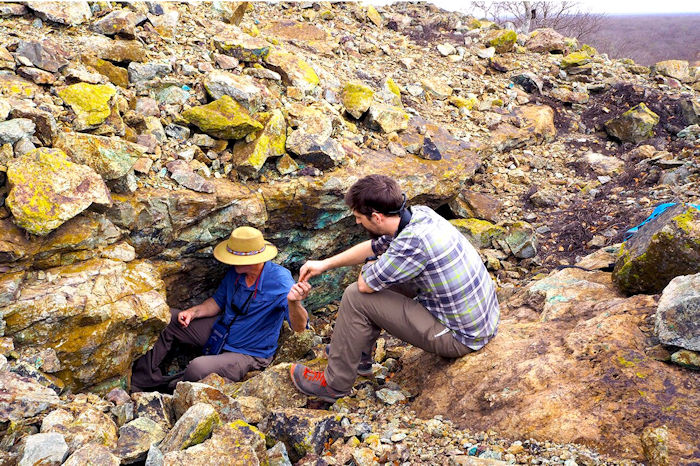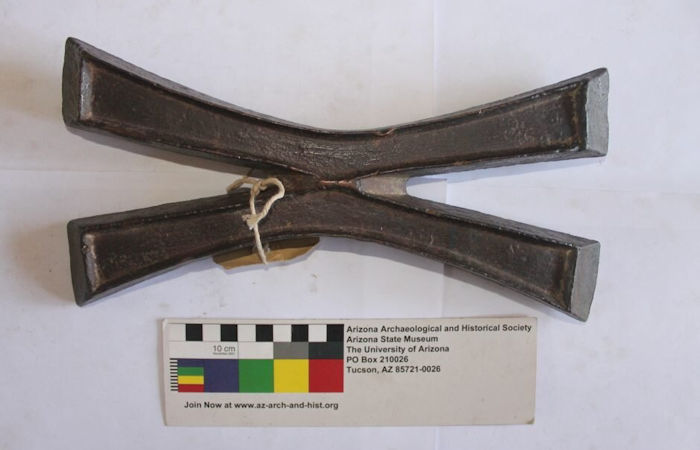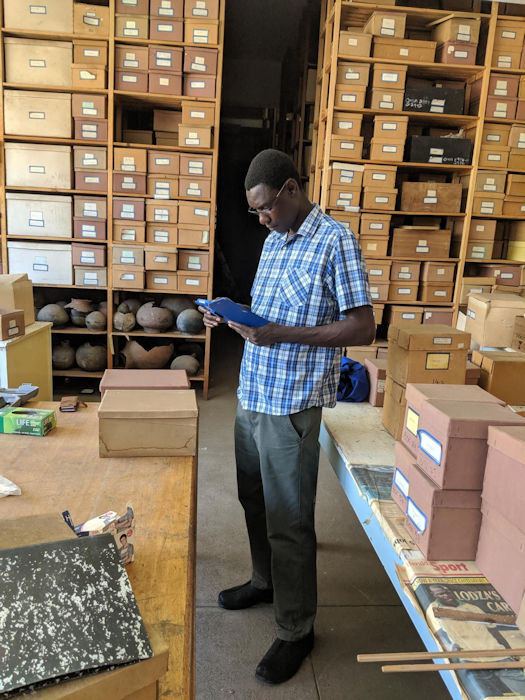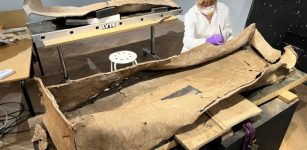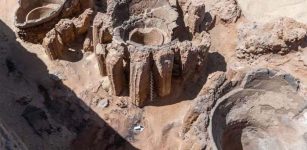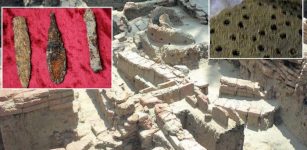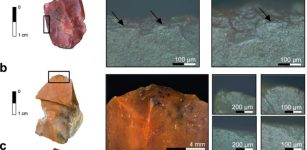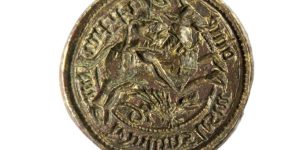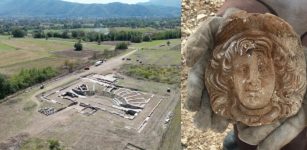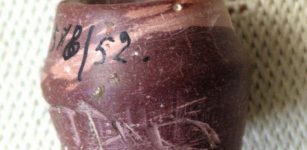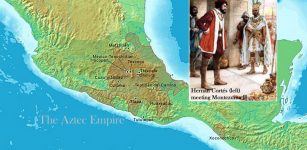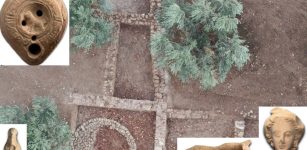Copper Artifacts Reveal New Cultural Connections In Southern Africa
Conny Waters - AncientPages.com - Chemical and isotopic analysis of copper artifacts from southern Africa reveals new cultural connections among people living in the region between the 5th and 20th centuries according to a University of Missouri researcher and colleagues.
Jay Stephens (right) collects samples of copper ore from a mine in Africa. Credit: Jay Stephens
People in the area between northern South Africa and the Copperbelt region in central Africa were more connected to one another than scholars previously thought, said Jay Stephens, a post-doctoral fellow in the MU Research Reactor (MURR) Archaeometry Lab.
"Over the past 20 to 30 years, most archaeologists have framed the archaeological record of southern Africa in a global way with a major focus on its connection to imports coming from the Indian Ocean," he said. "But it's also important to recognize the interconnected relationships that existed among the many groups of people living in southern Africa. The data shows the interaction between these groups not only involved the movement of goods, but also flows of information and the sharing of technological practices that come with that exchange."
Mining copper ore
For years, scholars debated whether these artifacts, called rectangular, fishtail and croisette copper ingots, were made exclusively from copper ore mined in the Copperbelt region or from Zimbabwe's Magondi Belt. As it turns out, both theories are correct, Stephens said.
People in the area between northern South Africa and the Copperbelt region in central Africa were more connected to one another than scholars previously thought, said Jay Stephens, a post-doctoral fellow in the MU Research Reactor (MURR) Archaeometry Lab.
One of the croisette copper ingots analyzed in the study. Credit: Jay Stephens
"Over the past 20 to 30 years, most archaeologists have framed the archaeological record of southern Africa in a global way with a major focus on its connection to imports coming from the Indian Ocean," he said. "But it's also important to recognize the interconnected relationships that existed among the many groups of people living in southern Africa. The data shows the interaction between these groups not only involved the movement of goods, but also flows of information and the sharing of technological practices that come with that exchange."
Mining copper ore
For years, scholars debated whether these artifacts, called rectangular, fishtail and croisette copper ingots, were made exclusively from copper ore mined in the Copperbelt region or from Zimbabwe's Magondi Belt. As it turns out, both theories are correct, Stephens said.
Gathering scientific evidence
Once the samples arrived at the University of Arizona lab, researchers took a small amount of each sample—less than one gram—and dissolved it with specific acids to leave behind a liquid mixture of chemical ions. Then the samples were analyzed for lead isotopes and other chemical elements. One challenge the team encountered was a lack of existing data to match their samples with.
Fortune Munetsi helps organize the samples at the Museum of Human Sciences in Harare, Zimbabwe. Credit: Jay Stephens
"One part of the project included analyzing hundreds of ore samples from different geological deposits in southern Africa—especially ones mined before the arrival of European colonial forces—to create a robust data set," Stephens said. "The data can provide a scientific foundation to help back up the inferences and conclusions we make in the study."
Historical connections
Stephens said the data they collect is one of the only remaining tangible links that exist today to those precolonial mines in Africa.
"Unfortunately, large open pit mines have destroyed a lot of the archaeological sites and broader cultural landscapes around these geological deposits," he said. "This makes it a challenge to reconstruct the history related to these mines. It's a concerning development, especially with the global push toward more electric vehicles which use minerals like copper and cobalt found in the Copperbelt."
The study was published in the journal PLoS ONE
Written by Conny Waters - AncientPages.com Staff Writer

